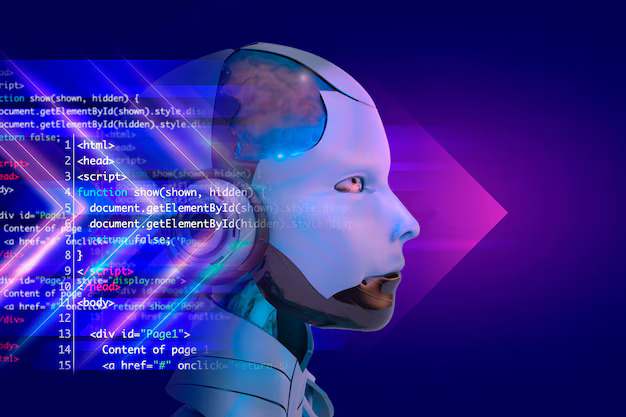The most spread concern among users today is, can machines truly think like humans? What once seemed like pure science fiction and a theoretical concept is now an extraordinary reality, driven by the rise of Artificial Intelligence (AI).
If we look at the past, starting from humble beginnings with basic code that could follow simple instructions, AI has evolved into a system capable of learning, adapting, and even making decisions with near-human intuition.
Artificial Intelligence has marked an incredible journey from rigid programming to advanced cognition options and is not just a technological breakthrough- it’s a revolution that is transforming industries, reshaping societies, and redefining what’s possible.
Since the discussion about the evolution of AI still confuses users out there. So we have drafted a write-up exploring how it has grown smarter over the years, and examining the profound impact it continues to have on our world.
The AI World: What Does “AI” Really Mean?
When the topic for discussion is “AI”, we talk more about a broad range of technologies. At its core, AI covers everything from a simple rule-based system. The discussion around “AI” has a few key categories like rules-based systems, machine learning (ML), and deep learning.
Machine learning development services include types like supervised, unsupervised, and reinforcement learning, where systems learn patterns from data.
Meanwhile, Deep learning on the other side is a more complex branch, involving bureau networks and powerful models like GANs and large language models (LLMs).
It is very important to understand all the categories of AI, particularly for businesses. It helps leaders in choosing the right tools for the right problems.
Whether it’s about automating customer service, improving decision-making, or creating personalized experiences, AI can be the right asset. And because of this, businesses are looking for an ideal AI development company in India to partner with.
Let’s clearly understand how AI evolved while clearly taking a look at the development trends at each stage closely:
Symbolic AI and Rule-Based System
Rule-Based System or Symbolic AI is a type of Artificial Intelligence where knowledge is represented using symbols and rules. As the name suggests, it works by following logical steps, much like solving a problem with pre-set steps.
At the initial level, the symbolic reasoning achieved great success in areas like chess and basic problem solving. However, it struggled with real-world complexity and uncertainty, which led to growing disappointment. These challenges, along with high expectations and limited progress, brought the first stage of “AI Evolution” in the late 1970s.
Evolution of Machine Learning
Just after the rule-based system, the evolution of AI witnessed the introduction of machine learning. ML restructured the whole working model by making a major shift from relying on hand-coded rules to using data-driven methods.
With the growth of computational power and the availability of massive amounts of data, machine learning quickly moved from theory to real-world business applications.
Progress in areas like image recognition, natural language processing, and predictive analytics brought new opportunities across industries. It helped companies in making faster decisions, personalizing customer experiences, and driving innovations at scale. Now you can hire AI developers in India to implement the latest technologies within their existing systems.
Deep Learning and Cognitive AI
Deep Learning involves multi-layered neural networks. This technology has revolutionized AI. The technology enables the system to learn from the vast amounts of data, improving its performance over time. This development marked a major impact on areas like computer vision, language processing and speech recognition.
In the current scenario, Artificial Intelligence has the capability of performing cognitive tasks like recognizing images, understanding and translating languages, and even holding natural conversations.
With these advancements and upgrades, AI is becoming more capable. Now, AI applications are in everything from virtual assistants to medical diagnostics, and showing immense potential for the future.
Generative AI and Creativity
Generative AI subset of AI, has tools like Generative Adversarial Networks (GANs) and large language models that are revolutionizing creative industries. By learning from the datasets, these AI models can easily generate new art, music, and written content, offering businesses innovative solutions to engage audiences.
Various businesses like advertising agencies, entertainment, and design leverage AI to accelerate content creation while enhancing creativity. However, this may raise some concerns about authorship and originality.
The Expected Future of Artificial Intelligence
While assuming the future of AI, it is quite evident that AI is moving fast toward General Intelligence- Systems that can think, learn, and adapt like humans. Here’s the overall journey so far:
- Reactive Machines: These machines or systems are the basic ones that quickly react to the inputs.
- Limited Memory: These AI system uses the past data to learn and identify patterns , like the self-driving cars
- General AU: The future of AI may have these general AI machines that can perform any intellectual task that a human can
- Superintelligent AI: If everything keeps growing at the same pace, then we may see the presence of superintelligent AI, which may have the capability to exceed human intelligence.
Conclusion
Since its inception, the evolution of Artificial Intelligence has witnessed some major shifts. From rule-based systems to deep learning and now generative AI, we have witnessed a transformative evolution that has reshaped every facet of our lives. What once started as a theoretical concept is now a part of our daily lives. Apart from this, the high-end technology is helping businesses transform the working patterns, and for this, businesses are continuously seeking out a renowned top mobile app development company.
The experts at the app development company can help you investigate the core areas where AI can be implemented to streamline your business processes.
